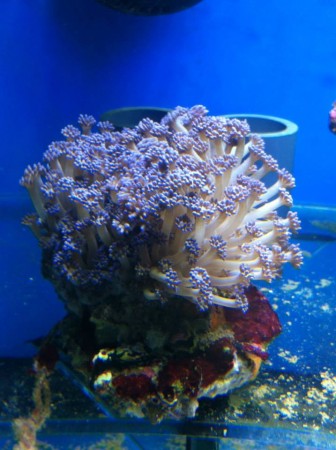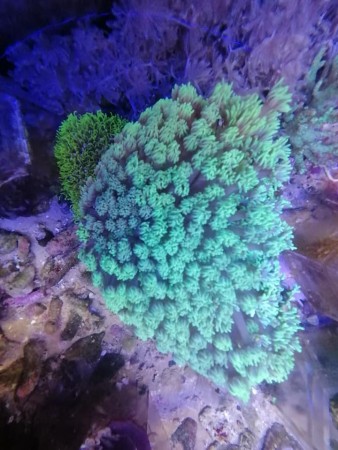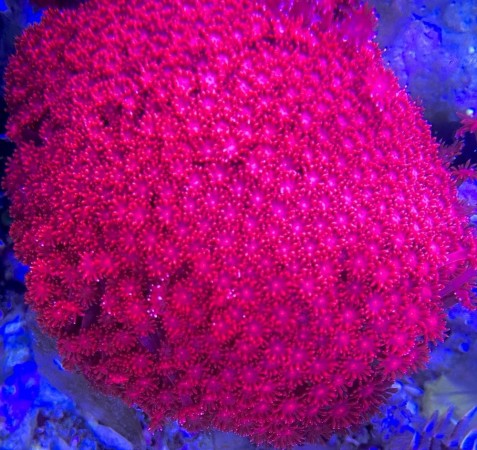Maintenance and care of Gonioporas in out tank
- Jul 24, 2021
- Arianna Rizzi
- 1238 0 0

Goniopora corals are large polyp stony corals - or LPS corals, it is possible to count 20 different species of Goniopora. These corals come in a wide variety of colors. The most common are green and brown, but they can be purple, red, blue, gray, yellow, cream and they originally come from a warm water tropical reef, in particular from Australia and Indonesia. These kind of LPS corals are difficult to keep because they need particular conditions to live. Let’s talk a more about the general care requirements for Goniopora:
Lighting
Goniopora are a photosynthetic coral so they derive some of their nutritional requirements from light. This is done through a symbiotic relationship with dinoflagellates called zooxanthellae that live in the flesh of the coral. The dinoflagellates are actually the photosynthetic organism and the Goniopora colony derives nutrients off of the byproducts of the dinoflagellates’ photosynthetic process. Moreover, the zooxanthellae are the reasonable of the colony color. if you expose Goniopora too much light, zooxanthellae will stress and you ‘ll assist to the bleaching phenomenon. In this case you try moving your coral to a more dimly lit area of the tank. If the light is lower, colony will slowly take on a more brown, due to the changes in the population of symbiotic zooxanthellae in their polyp tissue. The most successful parameters for keeping Goniopora healthy seem to include medium levels of light.A suitable PAR to target is probably about 100, +/- 20% (Range: 80-120).
Remember, with any coral animal, it is important to acclimate to the long-term conditions by gradually increasing to the final, full-strength lighting.

Water Flow
As with the lighting, it's hard to know exactly what levels of current flow will allow Goniopora to thrive. Goniopora appreciate low to medium flow. If you see the tentacles violently thrashing about, that is probably too much flow and it would benefit from being relocated to a calmer section of the tank. Or if you have a powerhead blowing right at Goniopora from short range, it may kill off some of the tissue at that point of contact and cause a chain reaction to the rest of the colony.
Placement
Proper tank placement is important to ensure your coral is getting the right amount of light and current.
You should place Goniopora colonies in areas where they can spread their tentacles without coming in contact with other corals.
You also shouldn't place two different species of Goniopora in a tank together because it will try to sting any other coral in its proximity secreting a toxic chemical that will kill colonies of a different species.
It is recommended keeping Goniopora in a tank designed exclusively for them instead of adding them to a mixed-coral tank.

Feeding
Although the Gonipora does get some of its nutrition from light (via the dinoflagellates in their polyp tissue), these corals need additional feeding.
Lack of nutrition from feeding is thought to be one of the factors that led to the very low survival rates experienced by early reef tank owners. There are two types of food that you can to provide Goniopora. The first is liquid amino acids. They are simple organic compounds that play a major role in building proteins as well as other biological functions at the cellular level. The second type of food is dry powdered plankton, oyster eggs, and sometimes brine shrimp.
Since Goniopora tend to retract easily, it's usually best to introduce food a little way away from the coral so the water stream will carry it to the polyps instead of injecting the food directly above the heads.
photos from Blue Coral






About author